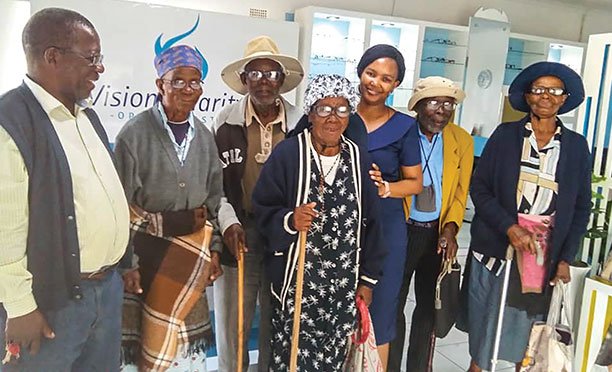Pensioners get free eye screening and specs
Seventy-five percent of all blindness is avoidable. Given the fact that the majority of blindness is treatable or preventable altogether, there is need for continuous sensitisation to keep members of the public in the know, according to Ethel Letshwiti-Monggae,
The Consultant Optometrist at Vision Clarity recently ran a week-long campaign to provide clearer vision to 40 senior citizens who have eye problems and no money to visit a specialist.
The campaign was a build up to the commemoration of the World Sight Day (WSD) last week Thursday. WSD is an international day of awareness held annually on the second Thursday of October to focus attention on the global issue of avoidable blindness and visual impairment.
This year the theme for WSD is ‘Eye care everywhere – a call to nations to ensure that everybody has access to affordable eye care’.Atleast 40 pensioners from Ootse, Mogobane and Ramotswa underwent free eye screening, got handed glasses and others got referred to Scottish Livingstone Hospital for further treatment.
Monggae said the campaign is an annual feat that her clinic has taken on to address sight challenges in the community.Since last year, the clinic has been offering free screening and glasses to elderly patients who don’t have medical aids or could otherwise not afford specialist care during the week of WSD.
“Sight really is our most treasured sense and helps children to learn, adults to work and the elderly to live independent and dignified lives. We feel privileged to be able to provide this service,”she said
According to Monggae, people aged 40 and above stand the danger of contracting many eye diseases including Hyperopia, which is a defect in seeing from either close or far range, which normally affect their reading ability. Most however, do not do anything about it because they assume that poor sight is a natural part of growing older.
Monggae and her the team identified several complications with the beneficiaries including glaucoma, diabetic eye disease, age-related macular degeneration with
cataract being the major one.
Cataract is any cloudiness or opacity of the lens of the eye, which is normally crystal clear. She, therefore, advised Batswana to seek prompt and regular medical check-up, noting that early detection and diagnoses would help prevent damages to the eyes.
The optometrist also appealed to the public to protect their eyes by way of sunglasses or goggles to prevent damage from UV light, especially when we are exposed to UV light for prolonged periods of time.
“Just as the sun can burn our skin, it can burn the surface of the eye, and exposure to ultraviolet (UV) rays has also been linked to serious eye conditions. This damage builds over time”.
The science of sunglasses
Sunglasses lenses can block UV rays, preventing them from reaching your eye. Sunglasses are therefore key tools to help protect your eyes from UV damage.
UV protection is measured using a technique called spectrophotometry, which checks how much UV light is absorbed or reflected by the lenses and how much passes through and could enter your eye.
Sunglasses manufacturers have to abide by standards that state which UV rays should be blocked. Stickers found on sunglasses let consumers know what UV rays the sunglasses block from your entering eyes, and can help you decide whether you are sufficiently protected.






